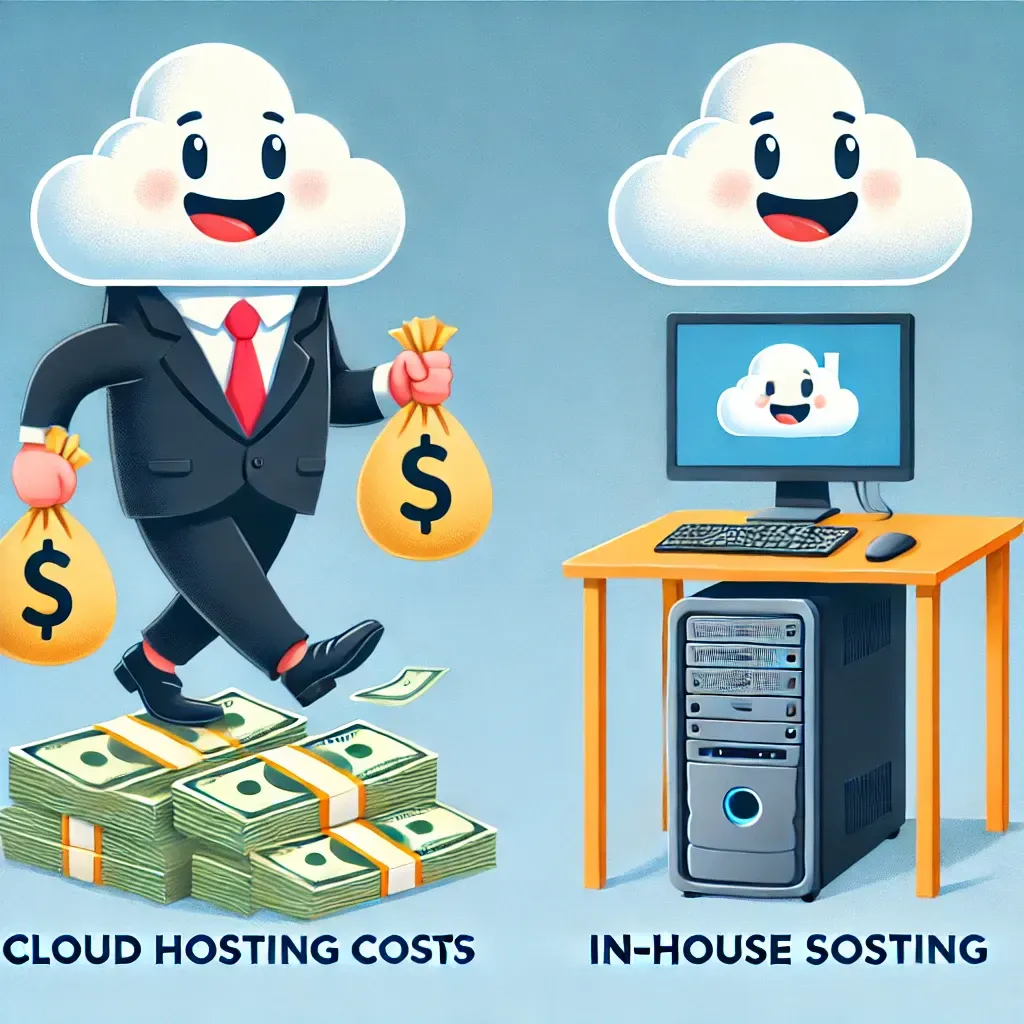Understanding eCommerce Server Costs: Is Hosting Worth It?

Introduction
Running an eCommerce website comes with ongoing costs—server infrastructure, bandwidth, database performance, and scalability. Many businesses underestimate how much hosting can cost, especially when dealing with high-traffic websites and large product catalogs.
This article explores:
✅ The real cost of eCommerce hosting
✅ Bandwidth considerations for high-traffic sites
✅ How scaling impacts server and database needs
✅ Why some businesses should consider in-house hosting
1. The Real Cost of Hosting an eCommerce Website
Every eCommerce business needs a fast, reliable, and scalable server. But how much will that cost? Let’s break it down:
🔹 Basic Shared Hosting (£8-£40/month) – Good for small sites but struggles with traffic & product scaling.
🔹 Cloud Hosting (£80-£400/month) – AWS, Google Cloud, or Azure give flexibility but charge per resource & bandwidth.
🔹 Dedicated Server (£200-£1200/month) – High performance but requires technical management.
🔹 In-House Hosting (£4,000+ setup, £160/month running costs) – High upfront cost but avoids bandwidth fees.
Example: A Solid eCommerce Server Setup
For a medium to large WooCommerce store, we need:
✅ 8-Core CPU, 32GB RAM – Handles traffic surges & database queries.
✅ 2TB NVMe Storage – For fast product image serving.
✅ CDN Integration – To reduce server load & improve speed.
✅ Database Optimization – Ensuring MySQL or MariaDB runs efficiently.
📌 Estimated Cost: £240-£800/month depending on cloud provider.
2. Bandwidth Costs: The Hidden Expense
Many hosting providers charge for bandwidth, and this cost can escalate quickly. Let’s consider an example:
🚀 A single 8K 32-bit image = 30MB
📈 500 visits per day viewing this image
💾 30MB x 500 = 15GB per day
📅 450GB per month for just one image!
What Does That Cost on Cloud Providers?
💰 AWS (CloudFront / S3 Bandwidth Pricing) – ~£0.06 per GB after free tier.
💰 Google Cloud Storage – ~£0.10 per GB after free allowance.
💰 BunnyCDN – £0.008-£0.024 per GB (more affordable option).
📌 Estimated Bandwidth Cost:
- AWS: £29/month for one high-res image.
- Google Cloud: £43/month for one image.
- BunnyCDN: £3.60-£10.80/month.
Now, multiply this by thousands of images and products, and you can see how quickly bandwidth costs escalate.
3. Will Your Database Handle the Load?
An eCommerce store with high traffic and product variations needs a robust database:
✅ Optimized MySQL / MariaDB setup – Avoid slow queries and overloads.
✅ Separate database server – Offload queries from the web server.
✅ Caching (Redis, Memcached) – Reduces database load by caching product queries.
✅ Database Read/Write Splitting – Uses master-slave replication to handle large-scale queries.
📌 If not optimized, your database will be the first bottleneck, leading to slow checkout times & lost sales.
4. Scaling Up: Do You Need More Than One Server?
As traffic grows, one server may not be enough. You may need:
📌 Load Balancing (LVS, NGINX or HAProxy) – Spreads traffic across multiple servers.
📌 Auto-Scaling Cloud Solutions – AWS EC2 instances that scale on demand.
📌 Multiple Database Nodes – To handle high-traffic product queries.
📌 Scaling costs money. Cloud auto-scaling works, but if traffic spikes, expect unpredictable billing.
5. Should You Host Your eCommerce Site In-House?
If you own a business with a leased line or fiber connection, in-house hosting may be a cost-effective alternative:
✅ No bandwidth charges – You only pay for your internet connection.
✅ High performance, dedicated resources – No shared cloud limitations.
✅ More control over security – No reliance on third-party providers.
✅ One-time hardware investment – Avoids ongoing cloud rental fees.
🚀 Example: Set up a high-performance server in-house for ~$5,000 and pay only $200/month for power & internet, instead of paying £800+ per month on AWS.
📌 If you have a fast, stable internet connection, in-house hosting is a long-term cost-saver.
6. The Final Verdict: Is It Worth It?
Let’s break it down:
💰 Cloud Hosting Pros & Cons
✅ Flexibility & Auto-Scaling
✅ Less Maintenance Required
❌ Expensive bandwidth & storage
❌ Vendor Lock-In
💻 Self-Hosting Pros & Cons
✅ Lower long-term cost
✅ Full control over infrastructure
❌ Requires technical expertise
❌ Power & connectivity limitations
Bottom Line: If you’re running an eCommerce store with large traffic & massive image storage needs, you need to think ahead and plan your hosting strategy wisely.
Conclusion: Making the Right Hosting Choice
🔥 Before launching an eCommerce site, consider:
- How much traffic do you expect?
- How many products & images will be hosted?
- Will bandwidth costs make cloud hosting too expensive?
- Can in-house hosting be a better long-term investment?
🚀 AKADATA helps businesses choose the right hosting solutions, optimize infrastructure, and reduce eCommerce operational costs. Let’s build a hosting plan that scales with your business!
